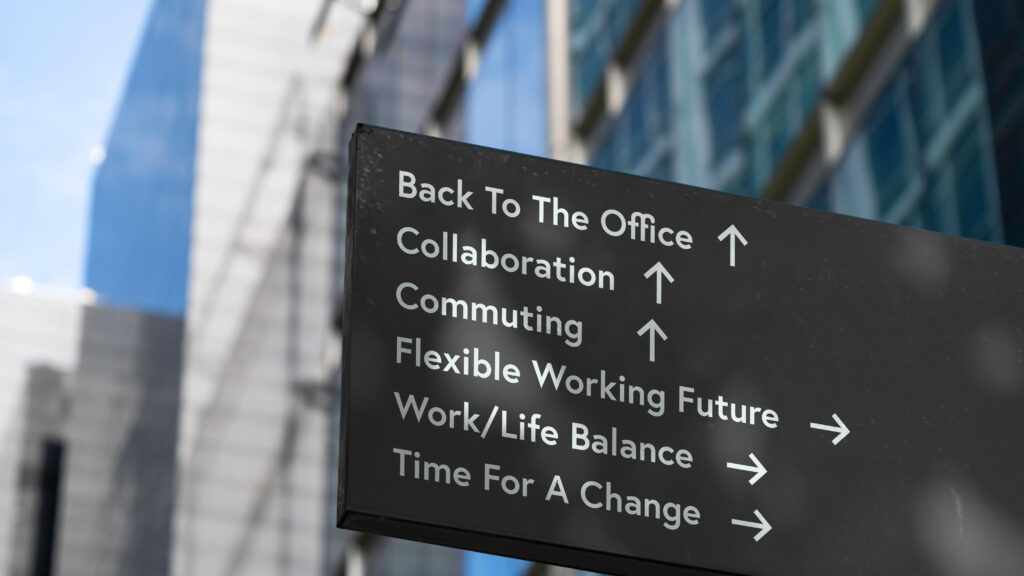When remote and in-person collaboration intertwine, we have a hybrid work culture along with the opportunity for introspection and reflection. By taking a close look at what it means to be part of a hybrid work culture, we can gain a better understanding of how to best ensure cooperation and collaboration among teams.
Hybrid work culture extends beyond the physical office space and into the virtual space where teams connect and collaborate every day. Cultivating a positive work culture will involve establishing shared values, fostering inclusivity, and promoting a sense of belonging that transcends the physical work environment.
Identifying Individual Work Patterns
The first step in this introspective journey involves understanding our own work preferences and rhythms. Embracing flexibility doesn’t mean abandoning structure. Instead, it’s about aligning work patterns with personal productivity peaks and valleys. By acknowledging individual work patterns and needs (i.e. early morning productivity, movement breaks, meal or snack breaks), a foundation for understanding yourself and your team is established, contributing to a work culture that values both autonomy and interconnectedness — positive qualities impacting both professional and personal lives.
Maintaining Open Communication
Collaboration and cooperation within a hybrid work culture thrives when communication is open, transparent, and encourages diverse perspectives. Whether connecting virtually or face-to-face, it’s important to cultivate an environment where ideas can flow seamlessly. Utilizing various digital communication channels, with the necessary training and skills mastered, each team member can be ready and comfortable communicating with their team.
Breaking Down Silos for Diverse Thinking
Collaboration in a hybrid and physical setting thrives when teams promote open dialogue and the sharing of diverse perspectives. By encouraging this openness and cross-functional interactions, teams can break down those dreaded silos, making room for a culture of collective intelligence and innovation. In addition, being part of a collaborative landscape means being an active listener, sharing in the decision-making process, and recognizing that each team member contributes to solving problems and meeting goals.
Overcoming Challenges
Cooperation and collaboration in a hybrid work culture does have its share of challenges, like any work setting. Striking the right balance between autonomy and interconnectedness requires a thoughtful approach. Establishing clear guidelines for communication, project management, and goal-setting becomes imperative in ensuring team members are doing their part towards maintaining a cohesive work culture.
Case Study: Shopify
A great way to understand cooperation and collaboration in hybrid settings is looking to real-world examples of organizations who successfully implement a hybrid work model. Shopify, an e-commerce platform, is one such organization who embraces a hybrid work model. With its offices located in various locations, the company acknowledges the diverse needs and preferences of its employees and allows a significant portion of its workforce to operate remotely.
Here’s what Shopify does well:
Strategies Deployed
- Flexible Work Arrangements
- Hybrid Team: Employees are given the flexibility to choose between working from the office or remotely, depending on their individual preferences and job requirements.
- Integrated Communication Platforms
- Hybrid Team: Utilizes a comprehensive set of communication tools, including Slack, Zoom, and collaborative project management software, ensuring seamless interaction regardless of physical location.
- Rotational In-person Meetings
- Hybrid Team: Organizes periodic in-person team meetings and workshops, allowing both remote and in-person employees to connect, share insights, and align on shared goals.
- Technology for Collaboration
- Hybrid Team: Invests in advanced technology infrastructure to facilitate smooth collaboration, ensuring that remote and in-person teams have access to the same resources and tools.
- Cross-Functional Collaboration
- Hybrid Team: Encourages cross-functional collaboration through integrated project teams, where members may be spread across different locations but work collectively towards shared objectives.
Outcome
Shopify’s hybrid work model has resulted in a highly collaborative and cooperative environment. The company has successfully retained its vibrant company culture, fostering innovation and creativity while allowing employees the flexibility to balance work and life in a way that suits them best.
Key Takeaways
- Offering flexibility in work arrangements promotes employee satisfaction and attracts a diverse talent pool.
- Integrated communication tools are crucial for maintaining a sense of connectivity among team members, regardless of physical location.
- Periodic in-person meetings provide opportunities for relationship-building and alignment on organizational goals.
Shopify’s approach to a hybrid work model demonstrates that with thoughtful strategies, inclusive policies, and a commitment to shared goals, organizations can create a collaborative and cooperative environment that maximizes the strengths of hybrid teams.

Conclusion
Embracing the synergies of a hybrid work culture and model, we not only have the opportunity to shape our professional lives into what can be a very fulfilling way to live and work, but also cultivate a work culture that thrives on adaptability, understanding, and collective achievement. As each team member takes an active part by being introspective and reflective, we are individually and collectively shaping a resilient and vibrant work culture for the present day and into the future.
Erin Jewell, Practice Lead, Executive Search, talks about the importance of cooperation and collaboration in hybrid work teams.

